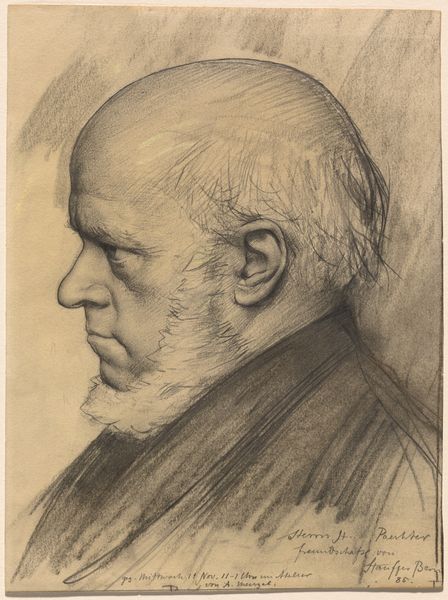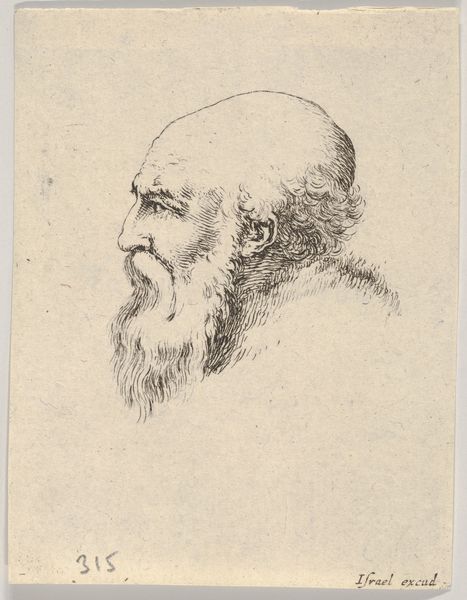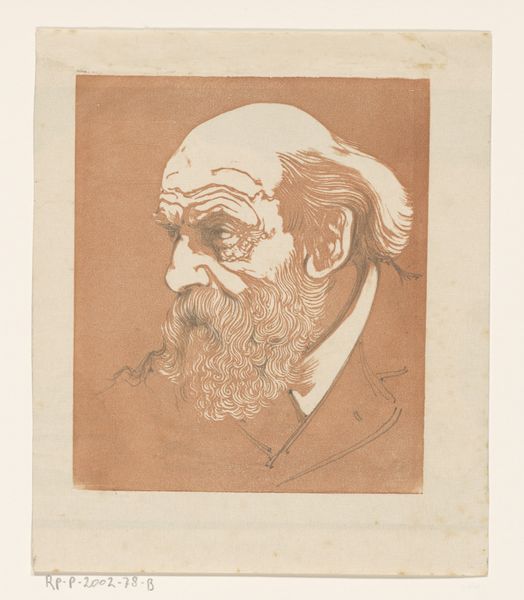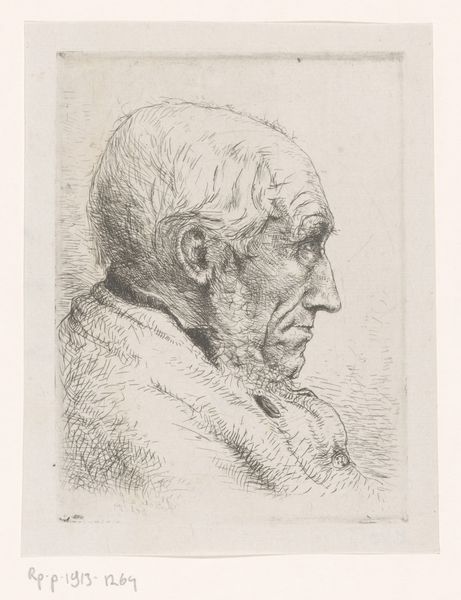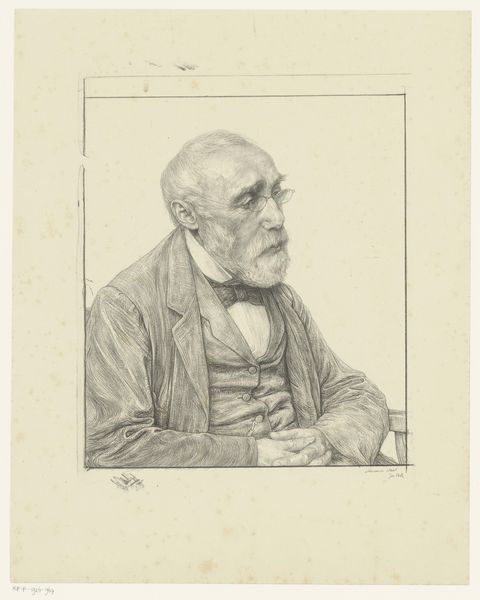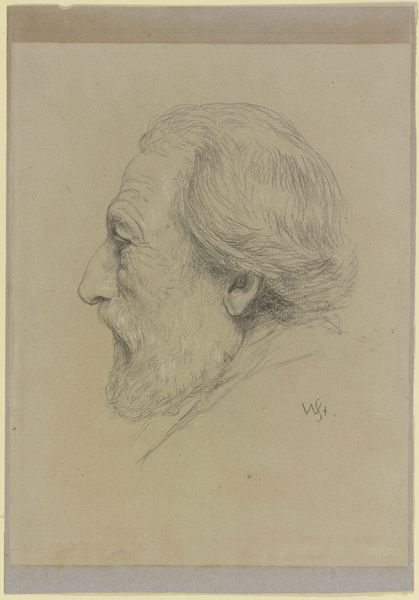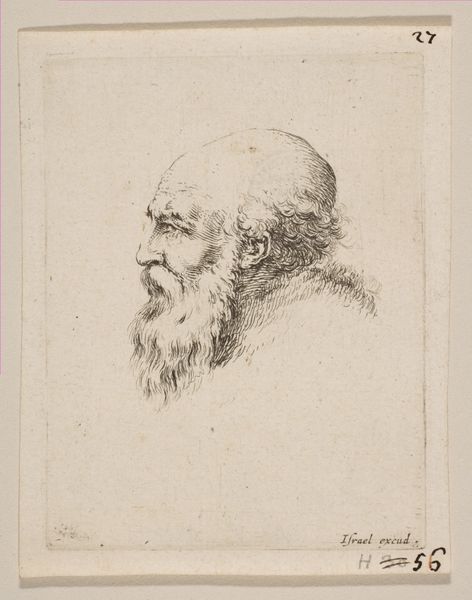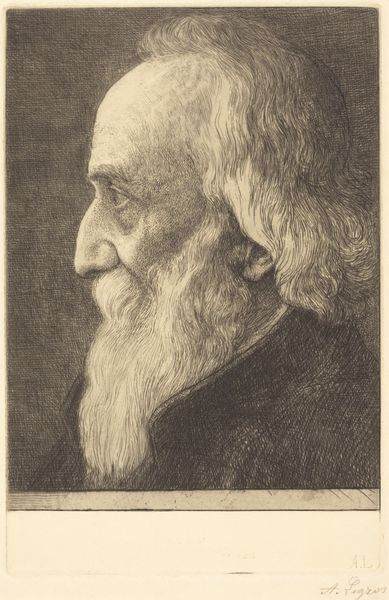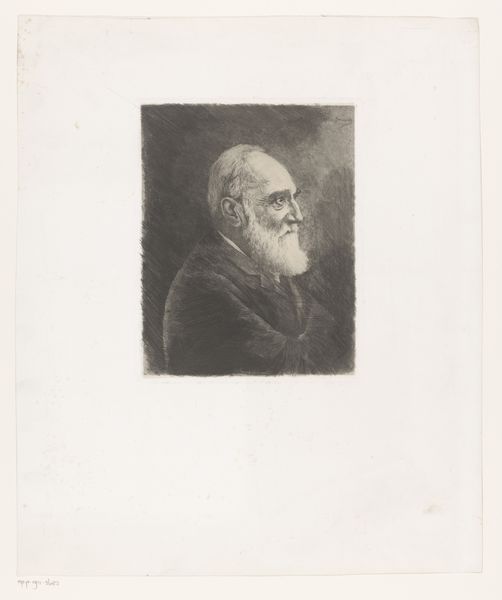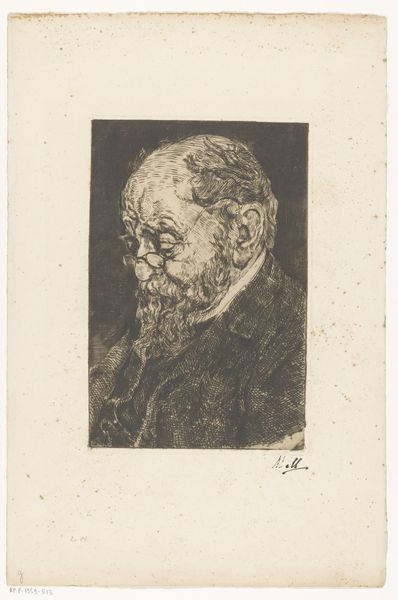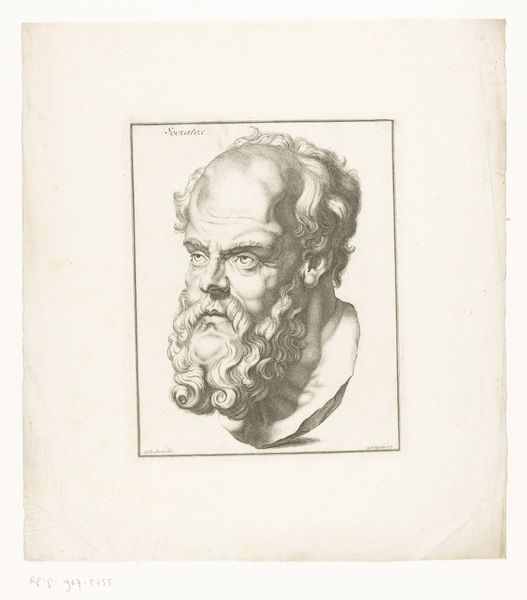
Dimensions: plate: 32 x 23.9 cm (12 5/8 x 9 7/16 in.) sheet: 42.6 x 33.3 cm (16 3/4 x 13 1/8 in.)
Copyright: National Gallery of Art: CC0 1.0
Editor: So, this is "Adolph Menzel," an etching by Karl Stauffer-Bern, created in 1885. I’m really struck by the level of detail he achieves in this print, especially around the beard. What do you make of it? Curator: I am immediately drawn to the process itself. Consider the labor involved in creating an etching like this. The repetitive action, the delicate control of the etching needle... it's almost a meditative act of production. Editor: Yes, it's clearly skilled work! Curator: Exactly. Now think about who this Menzel was, and what kind of resources he'd have needed to commission a print like this, which speaks of status and wealth. Is that an exploitation of labour itself? Moreover, an etching allows for multiple impressions - mass production if you will. It raises an interesting question - how did printing processes change the landscape for art? Editor: Interesting. It democratized it in some ways, allowing the artwork to reach the wider public but commercializing it simultaneously? Curator: Precisely. It blurs the boundaries. Consider this work's circulation within a rapidly industrializing society. How did Menzel engage with burgeoning markets through mass printing of his image, turning art into product and blurring lines? Editor: I never thought about art quite like that. I suppose it’s easy to ignore the material and socioeconomic aspect while focusing only on aesthetics or emotions that work may evoke. Curator: Agreed! It’s important that we look at materials, manufacturing processes, or any related conditions while understanding how that art changes art's cultural function itself, especially when this print made its journey out into the world, engaging audiences in its socio-economic environment.
Comments
No comments
Be the first to comment and join the conversation on the ultimate creative platform.
